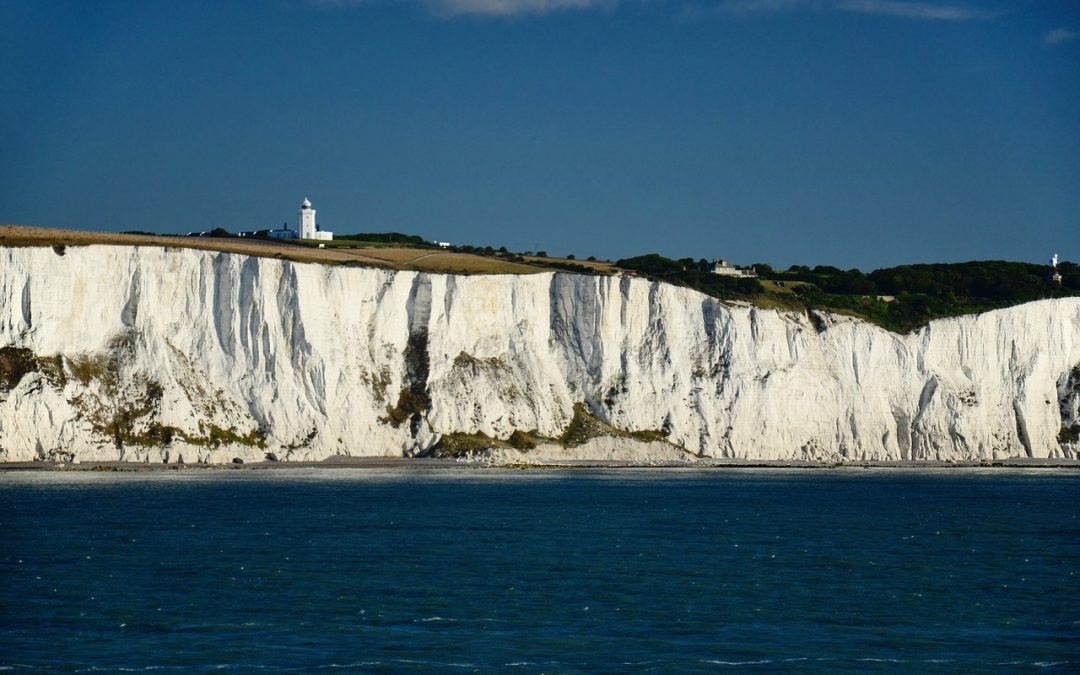The G&W Guide to… Engineering in Chalk
Geotechnical
Chalk forms the downland of southern England, the Wolds of eastern England and the white cliffs of Antrim, East Yorkshire, Dover and from the Seven Sisters to Dorset. So basically, if you are building in any of these areas, you need to read on to gain a better understanding of what you are building on.
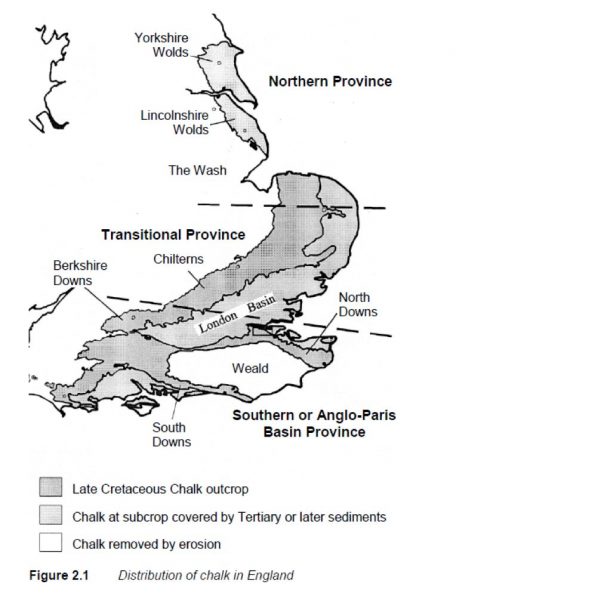
The schematic diagrams below, show all the types of chalk you could encounter during your developments and their names.
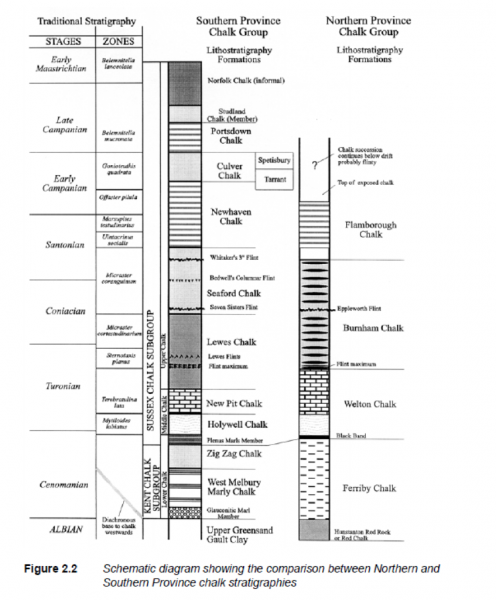 What is Chalk?
What is Chalk?
Chalk is formed deep under the sea by the compression of microscopic plankton that settled to the sea floor over millions of years. As an engineering material, it has special characteristics.
It is an ultra-fine-grained limestone composed of very pure, low magnesian carbonate, retaining high porosity and high moisture content. Its dual porosity, comprising both fine pores in the rock material and larger pores along fractures, affects its engineering behaviour in different ways.
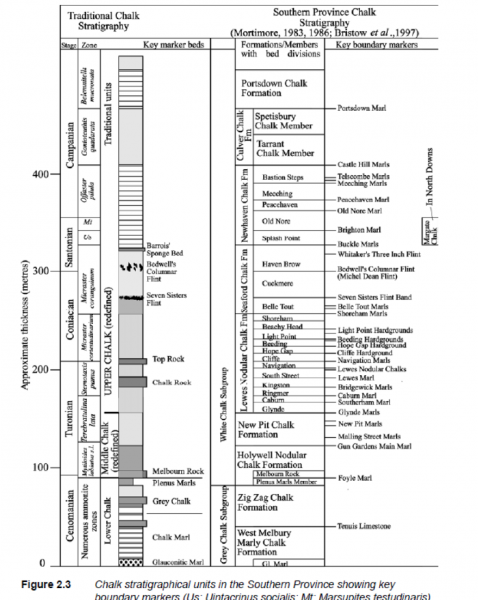 The following problems occur with site investigations in chalk:
The following problems occur with site investigations in chalk:
Designers of engineering works in chalk have always been hampered by their inability to sample and test the material adequately in boreholes
- Conventional shell and auger/windowless sampler boreholes produced a jumble of shattered fragments at best, but more generally a soft putty like material
- SPT blow counts are invariably low in the near surface chalk
- Plate Load tests carried out revealed high load carrying capabilities (>1000kpa)
- Designers who persist with correlating chalk grade against SPT blow count are likely to be severely mis-lead.
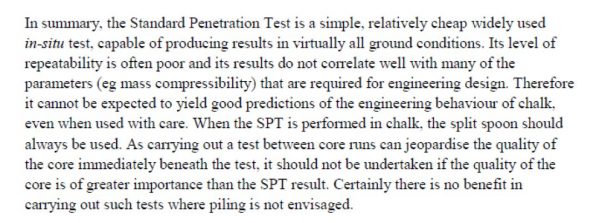
There are three stages to the engineering assessment of a chalk site:
- Understanding the broad geoframework of stratigraphy, sedimentology, tectonics and geomorphology through desk study and site visits.
- Proposing a conceptual ground model on the basis of the desk study, field observations and where appropriate, expert advice.
- Developing an engineering ground model on the basis of the above and the results of site investigation design the answer the questions raised by the conceptual ground model or to confirm it.
A geoframework is:
- Types of lithology present.
- Weathering Characteristics.
- Hydrogeological Aspects.
- Broad Field Setting (Stratigraphic position, tectonics, geomorphology, extent over cover and underlying sediments, archaeology (mines/cavities).
- Dissolution risk.
Some pointers for engineering assessments
- Do the background geoframe-work. Don’t skip this, it’s very important.
- Use the right investigation technique. For example – using boreholes may “hamstring” you to a lower bearing capacity.
- Identification and logging of individual bands of marl, flint or nodular chalk is desirable.
Summary of objective and available techniques:
Based on the above, a site investigation typically should have the following objectives:
- Determine the surface level of the chalk.
- Determine the nature and distribution of materials overlying the chalk.
- Determine the variability of chalk with depth from place to place.
- Build a spatial model of the ground.
- Measure properties required for geotechnical design.
- Determine the position of the groundwater table.
NB: It is important to note that shallow foundations on clayey chalk (Grey chalk, formerly lower chalk) can vary between 45 – 95%. Chalk with a lower carbonate content contains a higher proportion of clay materials, so its plasticity index can vary betweeen 5 – 30%, corresponding to clays of low to intermediate plasticity. So grey chalk does have Volume Change Potential and this needs to be taken into account during the site investigation.
The Ground & Water difference
Ground & Water is experienced and expert at ground investigation in chalk. We have a chartered geologist in the team who is a chalk specialist so we can get the most out the ground for your development based on following the principles listed above.
This means:
- Higher Bearing Capacities – thinner foundations
- Better soakaway offset
- Dissolution risk managed.
Knowing the exact engineering properties and characteristics of what you are building on will save you time, money and future proof your development.
